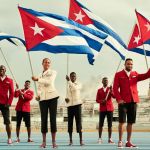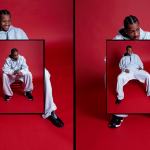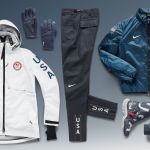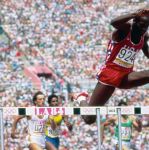
A short history of the Olympic style
Have a look to all the stylistic revolution inside the Olympic Games
July 28th, 2016
In about a week the XXXI Olympic Games will debut in Rio de Janeiro, Brazil. The approach to an event of this magnitude is always long and complex, and this year things have become even more complicated for the Brazilian crisis first and the Russian ban then.
But the Olympics Games will not stop. Over the years, they impacted everything: they stopped during the wars, have contributed - against their will - to the creation of regimes, they have destroyed others, they have fought racism, sexism, installing the values of sport to the foundations of our society. Last but not least, the Olympics have influenced the tastes and fashions of the fans, who then scattered like wildfire across the entire population.
To celebrate the start of the Rio Games then, we briefly retrace some of the key stylistic revolutions fomented by the Olympics: from the first uniforms to the advent of designers, from leather boots to the new titanium technology, an evolution that goes hand in hand with that of society.

From the disk to the synthetic
The rules on clothing have always been important part of Olympic history, and have gradually evolved opening advent of sponsors and advertising. An excerpt from the dress code of the marathon at the 1908 London Games, brings us a different world from what we usually see (although not too much). In fact :"Every competitor must wear full clothing from the shoulder to the knees (ie sleeved jersey to the elbows and loose drawers with slips). Any competitor will be excluded from taking part in the race the unless properly attire. " The most significant progress is made in the twenties, especially for the '24 Olympics in Paris. It falls several restrictions, especially regarding women's clothing, and we witness the introduction of new materials such as silk and cotton, which went to replace the historic wool. For “outdoor” uniforms instead we had to wait until the 30s and especially the United States: Los Angeles 1932. In California, but in 1984, was instead given permission to national to sponsor their uniforms. The real transition to "modernity", however, takes place in the '50s when the now prevailing in the textile mass production will adjust to the tastes and fashions of the moment. He begins to form the concept of "sportswear", at the same instant in which the synthetic enters the field: this is the era of nylon and lycra.

The Dassler brothers
All Olympics Games are special, but some remain longer in the memory than others. It's a fact. Berlin '36 for example, has not been an event like any other, and the flurry of stories that have surrounded it was perhaps 10 times larger than a "normal" Olympics. Federico Buffa is leading around, in recent months, a show, which devotes one of its most moving parts of the story of Jesse Owens, sprinter, Black and dazzling talent. '36 Was also the year in which the athletes were allowed to arrange with private sponsors. Jesse was persuaded by the brand created by two German brothers, precisely in Herzogenaurach specialized in footwear for athletics. The 4 gold won by Owens, and the great success of these boots, brought to light the genius of the two brothers, Adolf and Rudolf (fantasy, in Germany, may be an option) Dassler. But the '36 Olympic Games also mark the last period of peace seen from Europe, before Hitler and Nazi Germany would transform hell on earth. Of the Nazi party were also part of the two Dassler brothers, Rudolf more than Adolf, and when the first set off for the second time for the front Adolf decided to go north of the river that bisects Herzogenaurach and found adidas. Returning to his homeland, Rudolf took his half of the company and founded Puma.
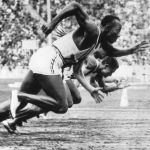
A history of shoes
That the Olympics is also a history of footwear innovation. By their nature, in fact, the Olympics have a need for many different types of boots, basketball sneakers by up to sprinter shoes, which are different from those from jumping and even more from those of the runners. In addition to the manufacture of the Dassler brothers, in 1936 another brand conquered the world in a definitive way, by taking a domain that still has only transferred from the parquet to the road: we are talking of Converse Chuck Taylor. Although introduced about 20 years ago on American playground, it is that in '36 Converse produces what will always remain its most iconic model, white colored with two small blue and red stripes. Dates were supplied to the US national basketball, still very white, but intended to enter into shoe racks over the world. The 1992 Games in Barcelona instead were illuminated by the Dream Team, the strongest basketball team ever, virtually unbeatable and voted on the show. His Majesty Michael Jordan was equipped by Nike for a special coloring of Jordan VII, with the insertion of gold that was nothing but an anticipation ahead of the end of August. Without forgetting the Onitzuka Tiger Runspark, with which Lasse Viren won two gold medals in Monaco '72. The second of which was accompanied by one of the most sensational promotional utterances of all time: Viren inn fact walked the last few meters (those inside the stadium) of marathon, with the two shoes in hands, raised to the heavens, so that everyone could notice them. Or the adidas Grand Slam, which Steffi Graf became the first and only tennis player to complete the Golden Grand Slam, and which contained the revolutionary new features of the three-peg cushioning system.
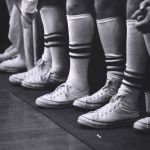
The arrival of fashion
It is during the break for World War I that the fashion (as we understand it today) became interested in sports and the Olympics in particular. Pioneer was Coco Chanel, determined to introduce jersey that could satisfy aesthetic as well as utilitarian. Between the wars the continued growth and in '48 the Italian expedition comes to London dressed entirely in clothes designed by Ottavio Missoni, also part of the azzurri selection, and for the first time dealing with a design challenge. For the stable collaborations however, it was not until the new millennium and, coincidentally, back in London. In 2012, in fact some of the most important high-fashion brands in the world will take the task of designing uniforms and clothing selections: Prada for Italy, Hermés for France, Ralph Lauren for the USA.

And then, Rio 2016
In this edition, all the stylistic preconditions have been fulfilled, and some of the collaborations between big names and national led to amazing results. This is the case of Canada, which has called into question the two brothers (Canadian) Dean and Dan Caten of Dsquared. Among the characteristic urban style of the brand and the renewed interest in everything that can be associated with the maple leaf (we already talked about a few months ago), Canada - as well as supported by Forbes – is candidate to be the best uniform in Olympiad. Christian Louboutin instead took over the construction of the uniforms of Cuba, creating (in particular) some magnificent jackets. "We designed the celebratory outfits for the moment they turn back into humans, still in the glory That moment, still in Their light but heading back to the real world," said Laboutin in the release statement. But the most interesting feature is perhaps in uniforms of Sweden. Will in fact be produced by one of the largest retail pret-a-porter in the world, H & M, and composed entirely of recyclable materials. Also interesting are the ponchos products from Lacoste for the French selection (with the iconic crocodile that this time it will turn blue white and red). And then there are the Americans, with their smiles and polo with horses and the raised collar.
